The best way to assess reading standards is to authentically assess reading ability
What should reading assessments look like?
Assess Reading Standards
We assess college and career readiness skills as they are described in the standards. Students demonstrate their ability to identify claims, analyze arguments, analyze text structure, and define words in context. We truly assess how well students can read.
- engage students in rigorous question types that require close attention to the instructions.
- deliver instant, specific feedback about reading standards directly to students in order to help them improve.
- measure reading standards authentically by asking students to read and reread a complete text with multiple reading purposes for each reread.
- ignite thinking with text-evidence question types that ask students to identify answers in the text and not from a list of possible answers.
- give teachers more instructional time by assessing reading standards for a shorter period of time.
- enjoy real-time reading data making placement, intervention, and access to current work a snap!

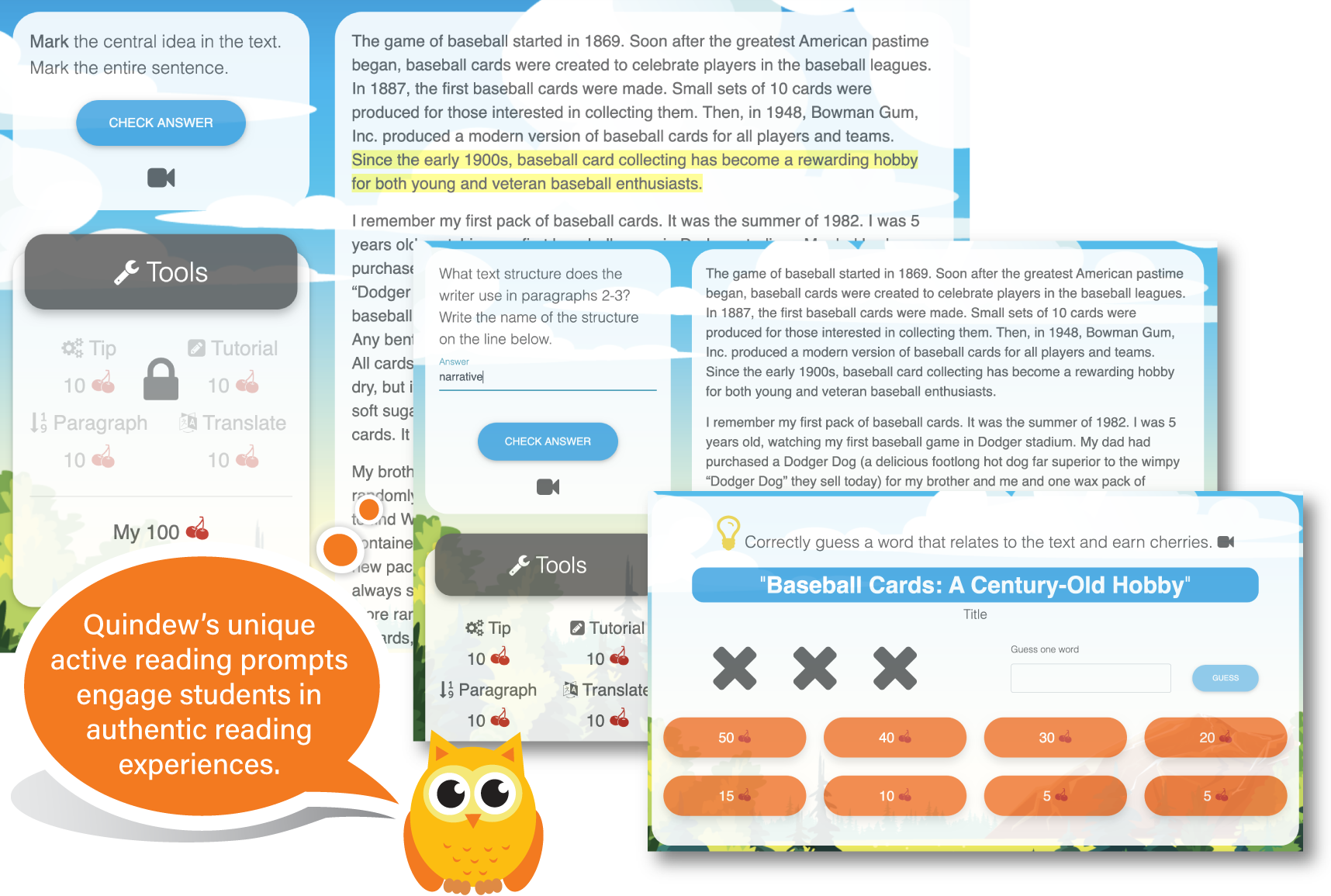
Identify Text Evidence
The best way to measure what students know is to ask them to show you.
- understand how students think through a text and comprehend what they are reading.
- ask students to mark textual details and identify key concepts like they would during a close reading lesson in class.
- monitor close reading skills instead of checking if a student picked the correct answer.
- hold students accountable for reading a text--with multiple choice, the brain wants to answer the question without reading.
Assessment for Learning
Our innovative Reading Assessments are seamlessly embedded into the learning process. Students enjoy reading on our platform, and teachers always know where their students are and can respond with targeted, data-driven lessons.
- increase opportunities for students to practice close reading skills and standards while being assessed on those same skills.
- personalize learning by offering instant feedback for each assessment question.
- ensure you meet students where they so they feel comfortable and confident as they read on our platform.
- differentiate learning moments and goals so students are working toward improving the reading skills and standards they need to learn.
- build critical content knowledge and vocabulary with our language dictionary that explains what words and phrases mean as they are used in context.
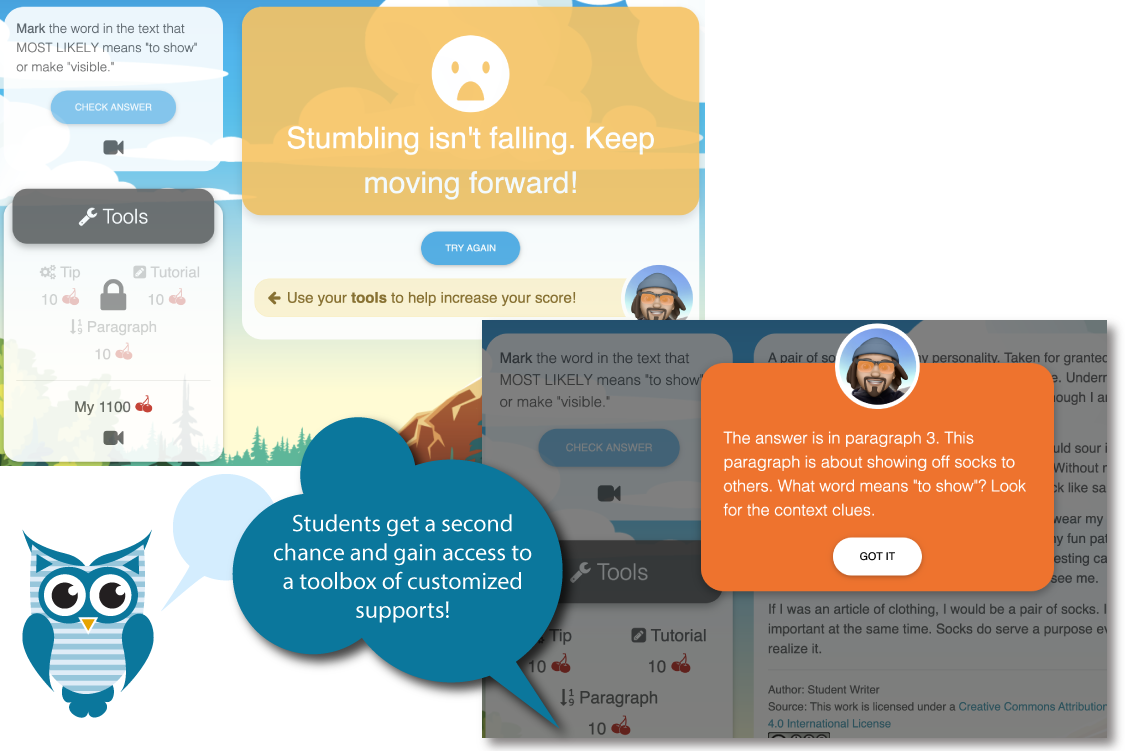

Ignite Students' Minds
Reading assessments can be fun. They can even be exciting. On average, 94% of our learners are highly engaged. Since our assessments are embedded into the learning process, students don't realize they are being assessed. They move through levels and master the building blocks of good reading, earn badges, and work toward new challenges. When students are engaged, they tend to try harder, giving you the best possible results.
- inspire students to learn how to think and ask the types of questions good readers ask.
- teach critical soft-skills like patience, perseverance, grit, and analytical thinking.
- ensure students give 100% effort on reading assessments.
- ensure students engage in hard tasks that require critical thinking and determination.
Research-Based Reading Assessments
Auto-Grade Close Reading
We use advanced computer automation to score text marking and short answer response questions and give instant feedback directly to students about how they are doing as readers.
Equity in Assessment
Our reading assessments are adaptive and offer personalized feedback based on student performance. We also provide second chance opportunities, language support, and scaffolds.
Working Toward Goals
Students work toward growth goals each time they read with us. Goals are set at the beginning of an assessment, and students are given feedback based on those goals at the end.
Continuous Assessment
Our Reading Assessments offer performance snapshots every 2-3 weeks, providing reading and growth data throughout the year. With up-to-the-minute reading data, you will always know where your students are and can respond with targeted, data-driven lessons.
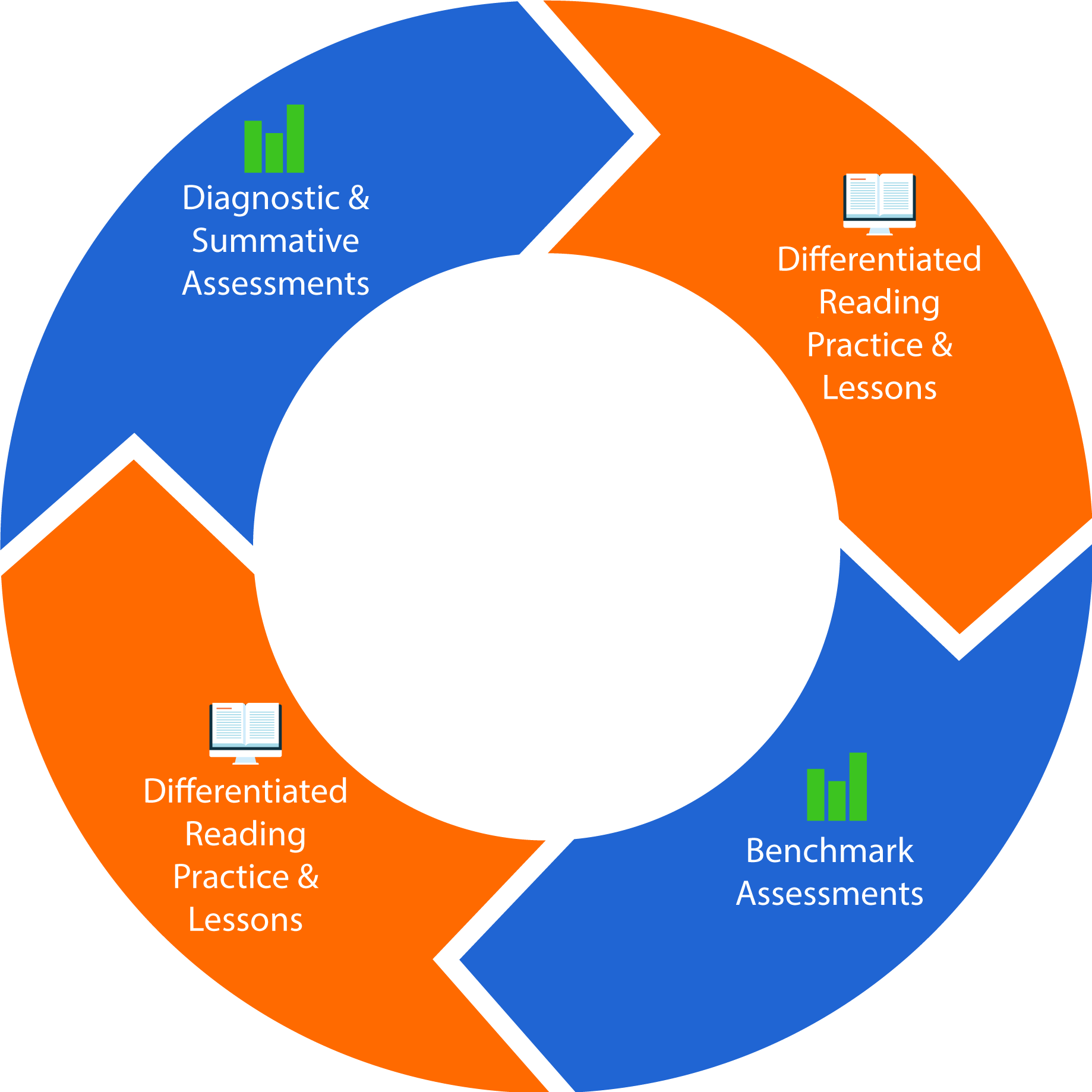
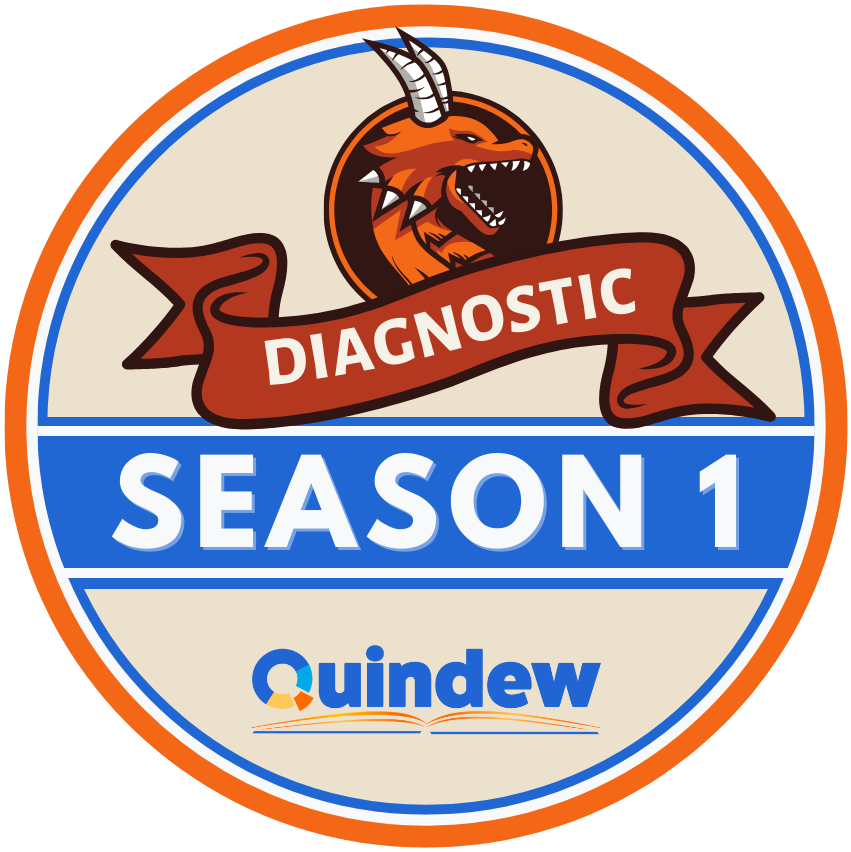
Our Diagnostic Assessment
Our Diagnostic Assessment begins the instant students log in and take their first Quest (or reading practice). A Quest has 10 questions and takes approximately 10-15 minutes to complete. Throughout the Diagnostic Season, students enjoy reading a wide variety of informative, argument, and narrative texts from the disciplines of science, history, and English language arts. Our reading assessments are adaptive, so students are issued text that best match their current reading ability. To show growth, we compare students' Diagnostic Reading Assessment to Benchmark Assessments.
Our Benchmark Assessments
Embedded Benchmark Reading Assessments allow us to deliver performance snapshots every 2-3 weeks. Each Season (a total of 12 Quests) offers three Benchmark Reading Assessments. As a way to increase engagement and maximize growth on Benchmark Assessments, students can monitor and plan for upcoming assessments. Additionally, we set personal stretch goals for each student. Students are notified of the goals and we provide feedback on how they are doing after each Quest.

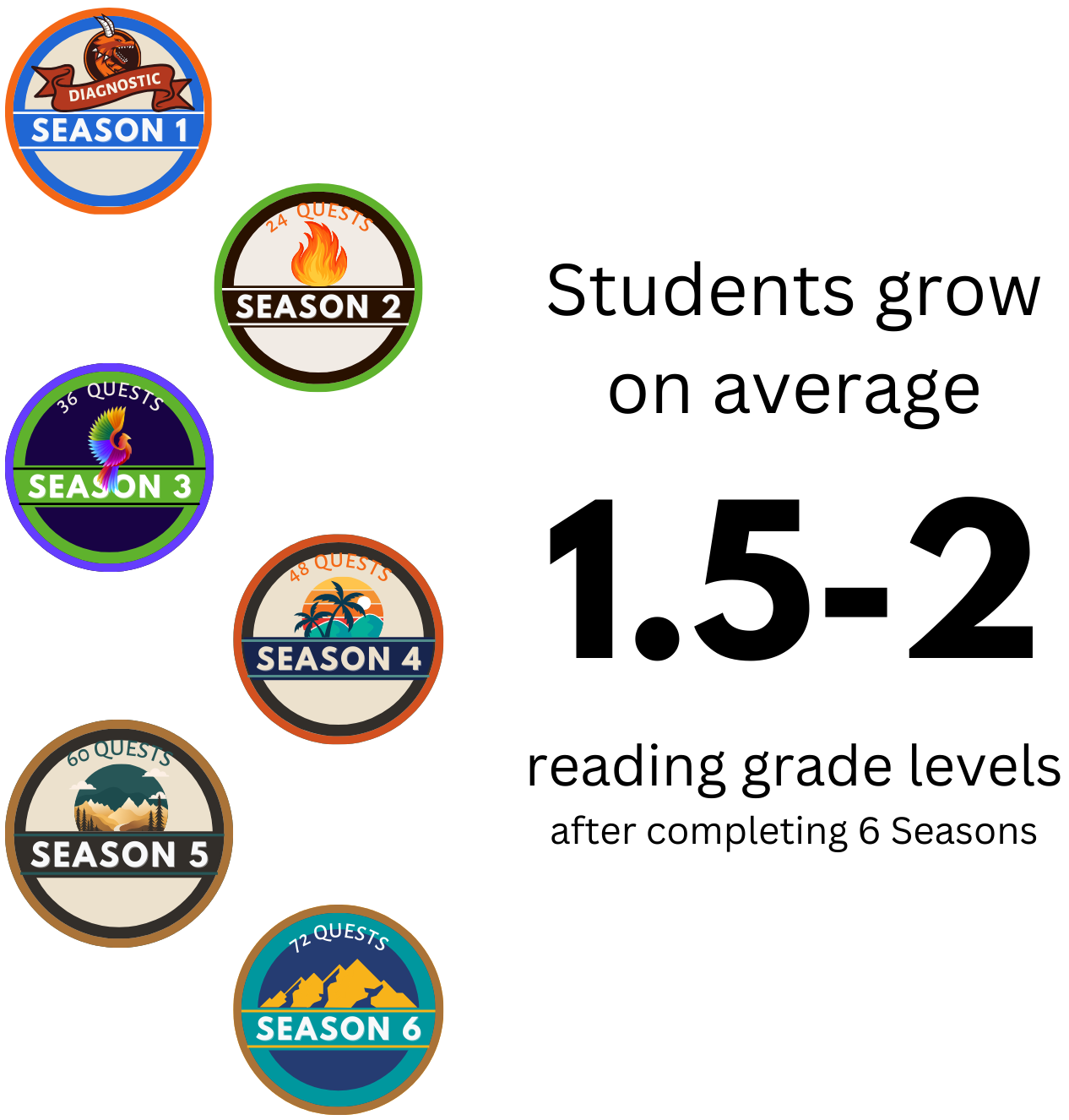
Students Grow with Each Season
On average, students grow over a quarter of a grade level between each Season (or 12 Quests). Since learning is a core component of our assessment process, students are always learning and deepening their reading knowledge. In addition to the learning moments throughout the assessment process, we offer data-driven, standards-based lessons that target reading gaps.
Imagine what you can do with real-time reading assessments...
Monitoring
Up-to-the-minute data helps you monitor recently reclassified students, provides real-time student data for IEP and 504 meetings, and delivers crucial information to evaluate program and instructional effectiveness.
Intervention
Real-time reading assessments are essential to understanding how well Tier I and Tier II interventions are working. Intervention is time sensitive, so you want continuous assessment to make data-driven decisions.
Placement
As part of Tier II intervention, students might need to be placed in programs with specialized instruction. Our Real-time reading assessments provide critical information to make these decisions and deliver weekly updates.